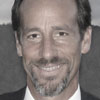Witches, Warlocks and Federal Reserve Chairmen
A few months ago, the insightful and engaging financial market observer, James Grant, drew a comparison between “witchcraft, on the one hand, and modern central banking, on the other.”
Grant presented this novel comparison in an address to the “Investment Decisions and Behavioral Finance” meeting at the Harvard Kennedy School.
“I won’t spend much time defining terms,” Grant began. “Witches, as you know, cast spells, make storms and fly on goats or broomsticks to diabolical nighttime rendezvouses called sabbats. Modern central bankers override the price mechanism, conjure money from thin air and undertake to boost economic growth by raising up stock prices.”
In other words, both activities rely greatly on a kind of mysticism – beginning with the notion that combining bizarre ingredients in a cauldron can work magic…and ending with the notion that mere mortals can wield supernatural powers.
Ben Bernanke’s “eye of newt” is quantitative easing (QE). According to American folklore, Bernanke casts benevolent spells, simply by tossing just the right amount of QE into the economic cauldron at just the right time.
“One might almost call it witchcraft,” Grant concludes his address.
Between Grant’s opening remarks and his conclusion, he presents one very striking, and somewhat alarming, comparison between witchcraft and central banking. Both superstitions emerged and then flourished during a time of relative enlightenment. Educated and enlightened populations embraced both beliefs.
Quoting an essay entitled, “The European Witch Craze of the 16th and 17th Centuries,” by British historian, H.R. Trevor-Roper, Grant remarked, “The belief in witches was not, ‘Trevor-Roper writes, ‘a lingering ancient superstition, only waiting to dissolve. It was a new explosive force, constantly and fearfully expanding with the passage of time…
‘Creduality in high places increased, its engines of expression were made more terrible, more victims were sacrificed to it. The years 1550-1600 were worse than the years 1500-1550, and the years 1600-1650 were worse still…If those two centuries were an age of light, we have to admit that, in one respect at least, the Dark Age was more civilized.”
After contemplating Grant’s observations, a hard-money guy or gal, couldn’t help but think of the “Dark Ages” of the gold standard, in contrast to the Enlightened Age of central banking.
During the monetary Dark Ages, the gold-backed dollar fended for itself, without the benefit of central bank wizardry.
But the Age of Monetary Enlightenment changed all that. The Federal Reserve began casting its spells 100 years ago, and the U.S. dollar has been bewitched ever since. The greenback has lost 97% of its purchasing power since the Federal Reserve came into existence.
The Fed’s beguiling wizardry continues nonetheless. Ben Bernanke concocts his bubbling brews of QE #1 through QE-infinity, while other PhDs at the Fed publish illuminating manuscripts like the recently released, “Computing Dynamic Stochastic General Equilibrium Models with Recursive Preferences and Stochastic Volatility.” (Thanks, Jim Grant).
Given their impressive array of charms and potions, it should come as no surprise that the wizards at the Fed believe in their own magic; the surprise is that the investing public also believes in it…and remains spellbound by the Fed’s incantations.
Just yesterday, Chairman Bernanke repeated his familiar incantation, “More QE…More QE…Whatever may be…More QE.”
The Dow Jones Industrial Average promptly rallied more than 100 points. The masses were awed by his power.
“In the current economic environment, the benefits of asset purchases, and of policy accommodation more generally, are clear,” Bernanke told the Senate Housing and Urban Affairs Committee yesterday, referring to the $85 billion of Treasury and mortgage-backed securities the Fed buys under its current quantitative easing program.
“Monetary policy is providing important support to the recovery,” the Chairman-Wizard continues, “while keeping inflation close to the [Fed’s] 2% objective.”
Beguiling words, to be sure. But Bernanke’s spells may not be quite as potent as he would have us believe. The “important support to the economy” that QE provides is literally invisible.
The so-called recovery of the last four years has logged the slowest growth rate – by far – of any recovery since WWII, despite the fact that Bernanke has conducted more the $2 trillion of QE programs during that time frame.
Many are the data points that call into question the “success” of QE. For starters, U.S. GDP contracted in the final three months of 2012. Accordingly, unemployment remains stubbornly high and consumer spending stubbornly low.
Just last week, Wal-Mart’s VP of finance and logistics groaned in an internal email:
“In case you haven’t seen a sales report these days, February MTD (month-to-date) sales are a total disaster…The worst start to a month I have seen in my seven years with the company.”
The retail giant also reported that its sales are tracking very closely to what it calls the “paycheck cycle” – i.e., sales spike twice a month…on paydays.
“[This trend] speaks to a strapped consumer that lacks the confidence to spend unless they literally have cash in their pocket,” blogger, Jeff Macke, observes. “Living paycheck to paycheck isn’t something you typically see in the fourth year of an economic recovery.”
Nevertheless, very few investors exhibit any desire to consider the downside. Perhaps for good reason. Why fret over “Bubble, bubble, toil and trouble” when Chairman Bernanke provides continues helpings of “Bubble, Bubble?”
Despite Bernanke’s dubious power over the economy, the man sure knows how to conjure a stock market rally out of thin air. The Dow has soared about 250 points since he began addressing the Senate yesterday.
One might almost call it witchcraft.


Comments: